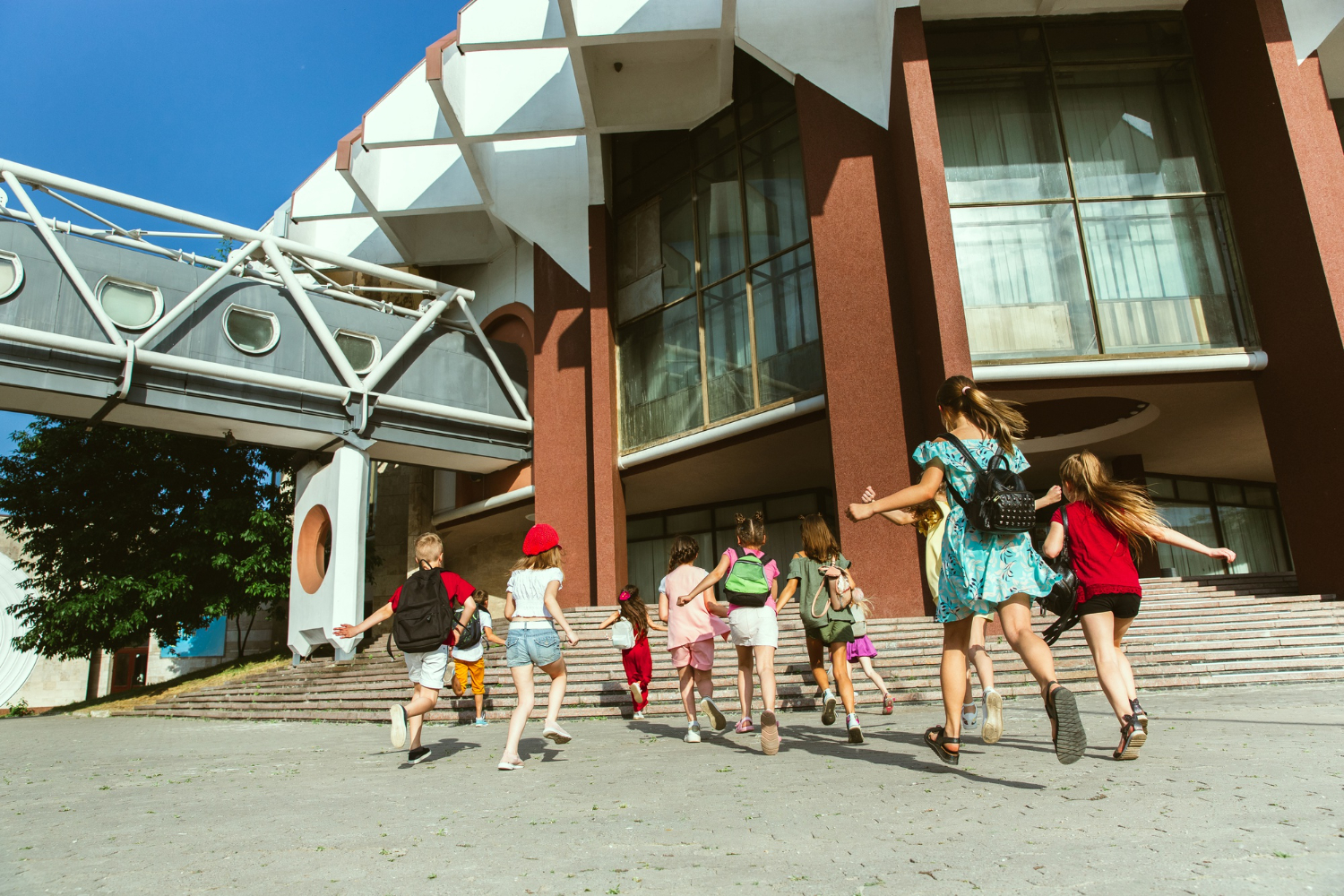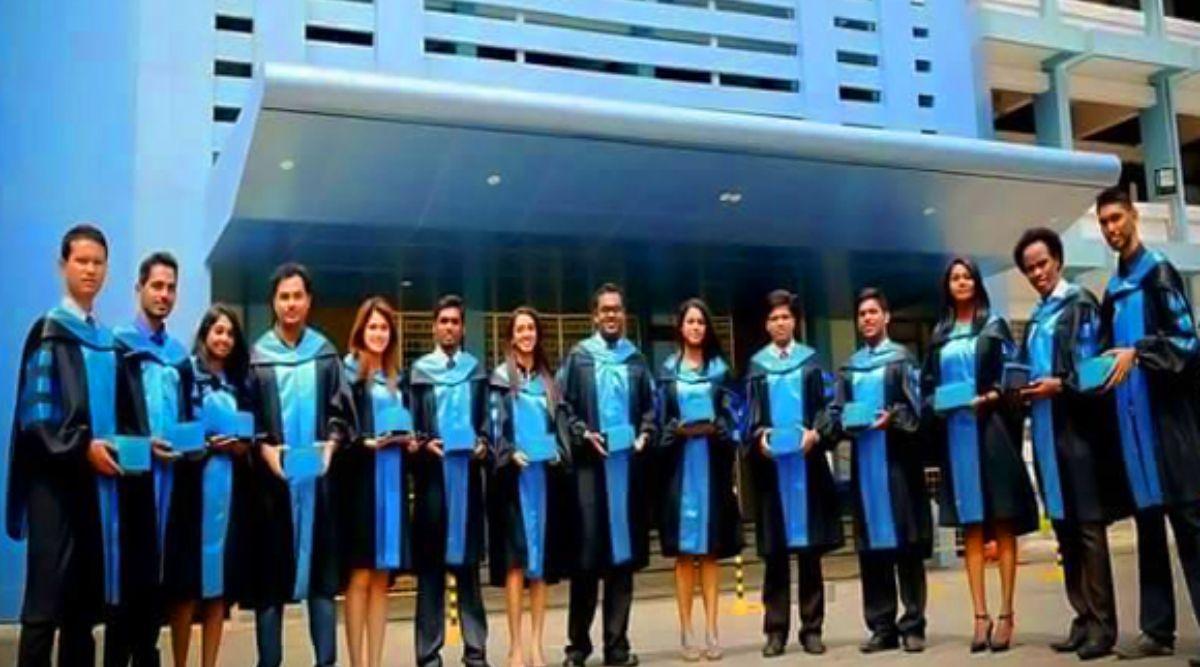Introduction
In the pulsating heart of Abu Dhabi, The International Schools here are charting a new course in education, where traditional meets technology.
As the world evolves at an unmatched pace, the significance of Ed-tech resonates louder than ever. Various institution here embraces the future, redefining education through the seamless integration of technology.
How about a classroom where textbooks are replaced with interactive screens, and curiosity is sparked not just by teachers but by the hum of digital innovation?
The schools are known for not only educating students but propelling them into an era where curiosity is nurtured, and digital fluency is not just a skill but a way of life.
In this article, we will learn how smart devices and digital tools are shaping the way students learn and teachers educate. Get ready to have valuable insights into schools that are not just keeping pace with the times but leading the charge into a future where learning knows no bounds.
Current Landscape of Education Technology
A. Global Symphony of Innovation: Tech Trends in Education
The global landscape represents a harmonious integration of tradition and innovation, such as interactive smartboards to cloud-based collaboration tools redefining pedagogical approaches and enhancing the learning experience.
B. Technology Adoption in Indian International School in Abu Dhabi
In a digital era where connectivity knows no borders, International schools are at the forefront of embracing transformative educational technologies.
According to recent global surveys,
- Approximately 92% of International schools are using digital devices for their classwork.
- A 30% rise has been seen in the adoption of interactive whiteboards and a 25% rise in the use of educational apps over the past two years.
- Not only that over 80% of schools have implemented cloud-based platforms for seamless collaboration transcending geographical constraints
- Also, the use of online assessments has also surged by 40%, indicating a shift towards more dynamic and adaptive evaluation methods.
C. Keeping Pace with Technological Advancements
The rapid advancement of technology is not merely a wave; it’s a tidal force reshaping the educational shoreline. Staying in line with technological advancements is essential for educational institutions for many reasons; let’s understand that.
- Preparation for the Digital Future
Being updated with technological advancements will help schools prepare students for the digital future that awaits them. As the professional landscape becomes increasingly tech-centric, students need to be equipped with digital literacy and technological proficiency which are necessary for a modern workplace.
- Enhanced Teaching Methodologies
Embracing the latest in educational technology helps educators to adopt innovative teaching methodologies such as Interactive smartboards, virtual simulations, and online collaboration tools which empower them to create engaging lessons catering to diverse learning styles.
- Global Connectivity and Collaboration
Private Schools in Abu Dhabi through technological advancements develop a collaborative learning environment that transcends geographical boundaries. Keeping pace with technology helps them to remain at the forefront of a globally interconnected educational community.
- Adaptive Learning Environments
It paves the way for tailored content based on each student’s learning styles and needs. Personalized learning platforms and data-driven insights, allow educators to create adaptive curricula that address the unique strengths and challenges of each student which improves the effectiveness of the educational approach.
- Strategic Institutional Growth
Institutions that are ready to embrace tech trends are positioned strategically for growth. From streamlined processes to enhanced communication, tech integration contributes to the overall efficiency of an educational institution.
Key digital tools used in classrooms
1. Interactive whiteboards
They are transforming traditional chalk and board methods into immersive interactive experiences. These smart boards empower educators to illustrate complex concepts and engage students through multimedia content. In Abu Dhabi’s International School, these interactive whiteboard canvases come to life with a touch, fostering a deeper understanding of the topics and lessons.
2. Educational apps and software
In the palm of every student’s hand lies a gateway to a world of knowledge, thanks to educational apps and software. From language acquisition apps which involve languages in a playful endeavour to interactive simulations that bring science concepts to life.
The International School embraces the power of digital applications to cater to diverse learning styles and to instil a sense of curiosity and independent exploration among students.
3. Online collaboration platforms
In an era where teamwork extends beyond classrooms, online collaboration platforms help in group projects, peer reviews, and real-time collaboration among students. Virtual classrooms, discussion forums, and cloud-based document sharing become easy with collaborative learning tools that transcend geographical boundaries.
Integration of Online Resources to Supplement Traditional Teaching Methods
1. E-books and Digital Libraries
The traditional library has been replaced with a digital repository (e-books and digital resources) at the International School. Students have access to an extensive collection of e-books and multimedia materials which enrich research capabilities and also provide a flexibility of on-the-go learning experience.
This digital evolution ensures that the school’s library is not confined to physical walls but to an unlimited realm of online knowledge.
2. Educational websites and platforms
Navigating the internet is an essential skill in the digital age, therefore schools equip their students with the tools to do so responsibly. The school has Educational websites and platforms which ensure that students learn and develop critical digital literacy skills.
3. Open educational resources (OERs)
Free resources, ranging from textbooks to multimedia content help in providing quality education reducing financial barriers and promoting the sharing of knowledge worldwide.
Digital Infrastructure and Support Systems
A. Discussion on the school’s technological infrastructure
1. High-speed Internet access
The hero behind the technology-centric environment is high-speed internet access and the Private Schools in Abu Dhabi invest heavily in providing a robust network infrastructure. Students and teachers enjoy uninterrupted connectivity and seamless access to online resources facilitating real-time collaboration, and multimedia-rich learning experiences.
2. Availability of devices for students
The school provides access to various devices such as laptops, and tablets helping students to engage with educational content both within the school premises and beyond. This commitment ensures that every student can harness the benefits of technology in their educational journey.
B. Support Mechanisms for Teachers and Students in Utilizing Technology
1. Professional development programs
The School invests in comprehensive professional training to equip teachers with the skills and knowledge to leverage technology to its fullest potential. Developmental programs are conducted to ensure that they remain at the forefront of educational technology trends.
2. Technical support teams
Occasional glitches are inevitable so it is essential to have dedicated technical support teams to address technical issues and provide assistance to both teachers and students. This proactive approach helps in minimizing disruptions.
Impact on Teaching and Learning
A. How Technology Enhances the Teaching Process
1. Personalized learning experiences
Technology at the International School is not a one-size-fits-all. It helps to provide personalized learning experiences. With adaptive learning platforms and intelligent algorithms, teachers tailor content to meet the unique needs and learning styles of each student.
This platform provides interactive quizzes, targeted learning modules, or virtual simulations, which enables educators to create a customized educational journey and foster a deeper understanding of subjects.
2. Gamification and interactive lessons
Educational apps turn lessons into engaging challenges, transforming abstract concepts into tangible achievements for eg:- Gamified elements, such as rewards, badges, and leaderboard systems.
This rewarding system captivates students’ attention making the learning process enjoyable leading to active participation, enhancing comprehension and knowledge retention.
Challenges and Solutions
A. Identification of Challenges in Integrating Technology
- Resistance from Educators or Students
Teachers may show hesitation to embrace new tools or students may become overwhelmed by the introduction of unfamiliar technologies. Overcoming these challenges needs proper communication, training, and showcasing the benefits of technology.
- Technical Issues and Limitations
Connectivity problems, and software glitches, can disrupt the seamless integration of technology. Identifying these issues is crucial in maintaining a reliable and efficient digital infrastructure.
B. Solutions and Strategies to Overcome Challenges
- Continuous Training and Professional Development
Regular learning sessions are organized to enhance digital literacy and proficiency among educators. By encouraging them to develop the necessary skills, the school empowers them to navigate the digital landscape confidently.
- Upgrading Technology Infrastructure
The school invests in a robust strategy such as regular assessments of existing systems, anticipating future needs, investing in state-of-the-art technologies, upgrading hardware, and optimizing software so that there are no roadblocks but smooth learning sessions.
Future Trends and Innovations
- Artificial Intelligence in Education:
The integration of (AI) in education is poised to redefine the learning experience. International School has adopted AI for automation, personalized learning pathways, tutoring and assessments.
Algorithms help educators in analyzing student performance and identifying learning gaps to create tailored educational content to meet their specific needs. This improves teaching and helps to provide an optimized learning experience.
- Virtual and Augmented Reality Applications:
The world of education is on the cusp of a transformation through the immersive (VR/AR). The International School has adopted VR to bring subjects to life, helping students to explore historical events from the past; and transporting students beyond the confines of the classroom. These technologies promise to revolutionize experiential learning.
Conclusion
In the nexus of tradition and technology, the Indian International School in Abu Dhabi stands as a beacon of educational evolution for not just embracing change but for sculpting a tomorrow where education is not confined within walls but stretches into the boundless realms of innovation.






